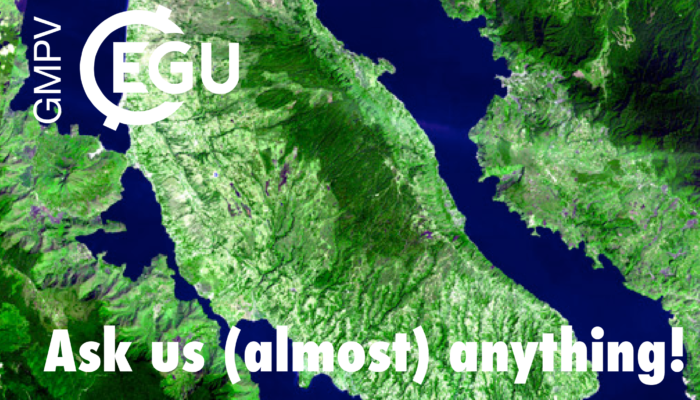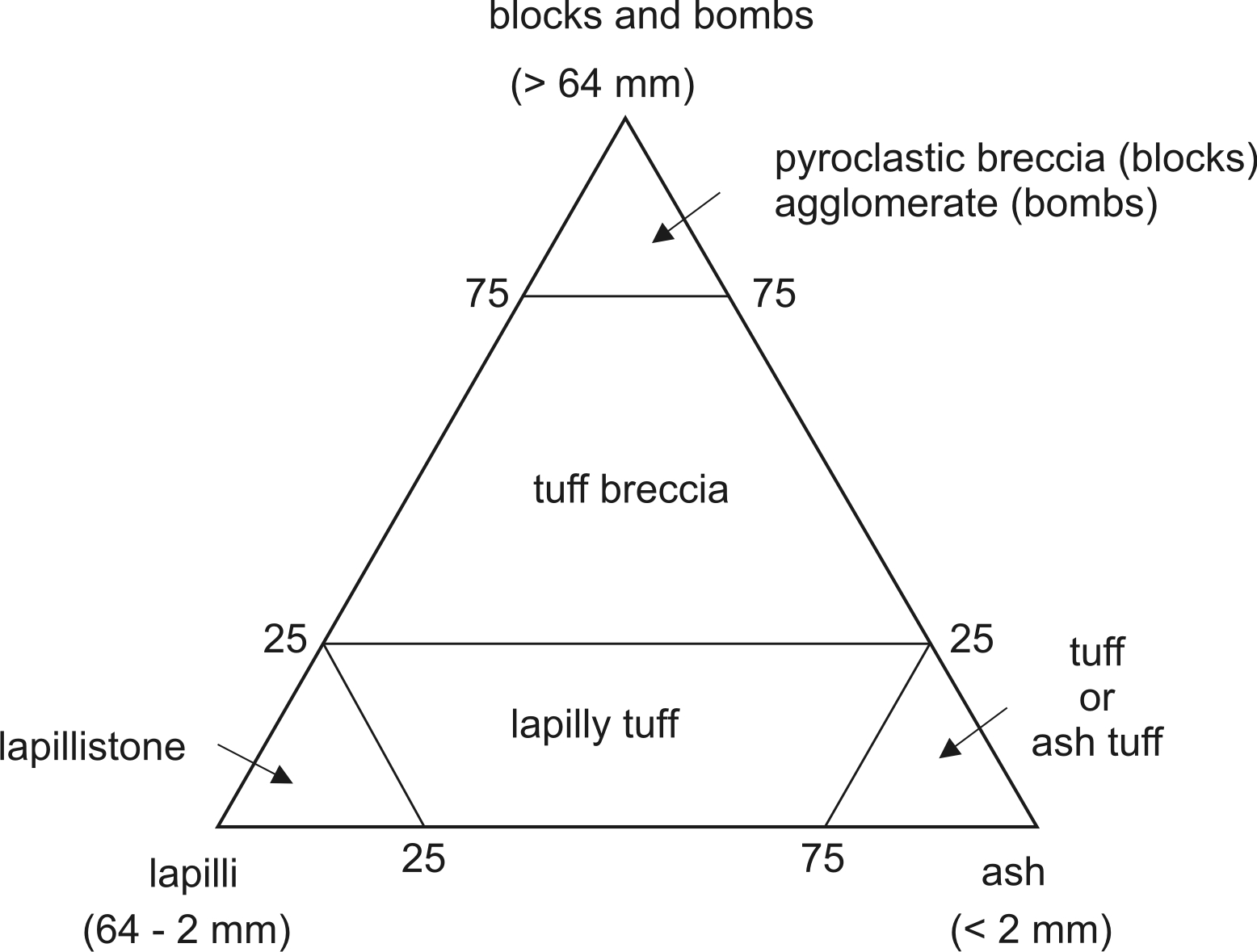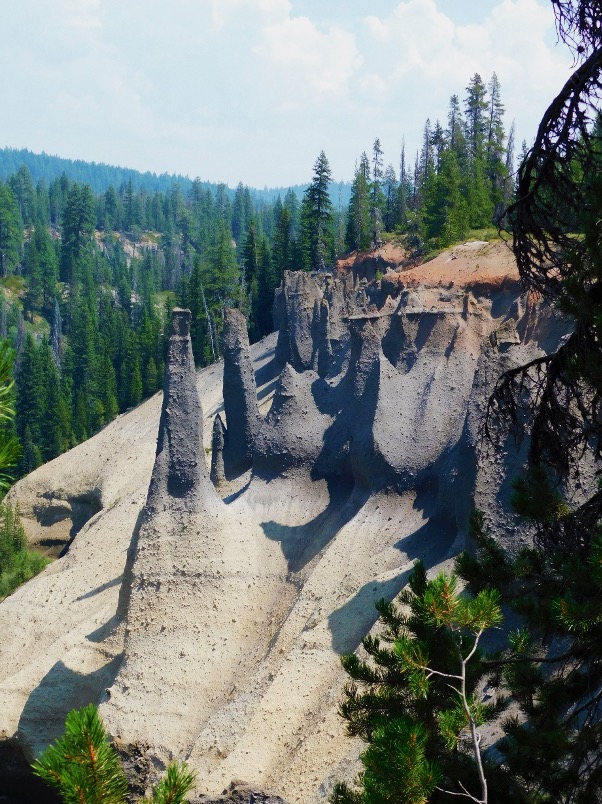
Tarun Goswami, an archaeologist from India, asks:
How is a tuff formed?
and more specifically…
Why do some deposits have more ash than others?
We are paraphrasing – the questions are specifically about the tuffs formed in the Toba supereruption. So… you asked, we answer! First of all, modern definitions generally describe a tuff as
a volcaniclastic rock composed of solid volcanic ash that may contain particles of volcanic glass, small fragments of crystals formed in lava and/ or fragments of volcanic rock and lava (Introduction to Mineralogy and Petrology, 2014).
To clarify the differences between ash and tuff, we should first review the basic classification of “tuff” and “ash”, according to Fisher (1966). This plot shows different classifications based on the particle sizes:
Ash: a tephra where particles are less than 2mm in size.
Tuff: a pyroclastic rock where the average size of more than 75% of the pyroclastic fragments is less than 2 mm and less than 25% of the fragments are > 64 mm.
Ash is a typical product of large volcanic eruptions and is commonly defined by a particle size of < 2 mm. Particles with a size of 2 to 64 mm, on the other hand, are classified as lapilli and eruptive products bigger than 64 mm are called blocks and bombs. During eruptions these products accumulate at the Earth’s surface and can solidify into a so called pyroclastic rock consisting out of different amounts of ash, lapilli and blocks/ bombs. Those rocks are then called tuff. Based on the accumulated amount of each component these tuffs can be defined as “ash tuff”, “lapilly tuff”, “tuff breccia”, etc. However, the common term tuff usually refers to what is described as ash tuff, a mixture of more than 75 % of ash with less than 25 % blocks/ bombs and lapilli.
Usually tuffs are subdivided into two main types, based on their composition, and how rich they are in crystals: 1. Crystal-poor rhyolites and 2. Crystal-rich dacites. Crystal-poor rhyolites often display strong compositional and mineralogical gradients, while crystal-rich dacites are typically homogeneous in their composition and crystal content as a result of convectional stirring of the magma reservoir before eruption (Huber et al., 2012). A typical example of a tuff with homogeneous dacitic composition is the oldest tuff of the Toba volcanic system, known as Harranggaol Dacite Tuff (1.2 million years old (Ma)). Younger products of Toba like the Oldest Toba Tuff (0.84 Ma), the Middle Toba Tuff (0.5 Ma) and the Youngest Toba Tuff (74 thousand years old (ka)) on the contrary are of typical rhyolitic composition with the Youngest Toba Tuff being considered the biggest volcanic eruption ever experienced by humankind. The release of a huge volume of volcanic ash (2800 km3) in the atmosphere caused severe long-term climate change on a global scale.
The formation of the small particles that make up tuff and ash is intrinsically related to the dynamic processes that occur in the conduit, which connects the magma reservoir below the volcano to the surface. These processes are usually described as fragmentation process:
Fragmentation: the transition from a continuous melt with a dispersed gas phase to disconnected parcels of bubbly melt within a continuous gas phase (Encyclopedia of Volcanoes).
The intensive fragmentation process generally produces large amounts of ash, which consist of both juvenile (glass and crystal) and non-juvenile material (lithics, meaning bits of rock). This fragmentation can occur through rapid acceleration, and decompression of the magma during ascent in the conduit. As the ascending magma decompresses, gas-filled bubbles in the magma start to expand. Eventually, these bubbles rupture, which causes the magma around the bubbles to break up (fragment) into smaller pieces.
Recently, several studies used bubble number density (BND) to calculate decompression rates. The BND shows the number of bubbles which formed through homogeneous nucleation in the conduit. A high BND means a high fragmentation rate – this is positively correlated to the decompression rate. A high decompression rate leads to strong fragmentation of the melt within the conduit producing large volumes of fine-grained ash. So higher decompression rate = strong fragmentation = lots of ash.
The estimation of decompression rate of the eruption forming the Youngest Toba Tuff using this BND method shows really high decompression rates ranging from 106 – 108 Pascals per second (trust us, that’s high). This extraordinarily high decompression rate is really important – this is one of the reasons that huge amounts of ash were produced in the Youngest Toba Tuff eruption.
So generally speaking the amount of ash produced during an eruption is controlled by the decompression rate experienced by the ascending magma. This means that if we have an eruption where magma is ascending rather fast experiencing a high decompression rate, more ash will be produced due to strong fragmentation than if the magma is ascending slower initiating less fragmentation.
Do you have a burning question that you need answered? Ask us here 👍
Further reading: Bachmann, O., & Bergantz, G. W. (2003). Rejuvenation of the Fish Canyon magma body: A window into the evolution of large-volume silicic magma systems. Geology, 31(9), 789-792. Chesner, 1998. Petrogenesis of the Toba Tuffs, Sumatra, Indonesia. Journal of Petrology, Vol. 39, No. 3, 397-438. Haldar, S. K. (2020). Introduction to mineralogy and petrology. Elsevier. Huber, C., Bachmann, O., & Dufek, J. (2012). Crystal-poor versus crystal-rich ignimbrites: A competition between stirring and reactivation. Geology, 40(2), 115-118. Toramaru, 2006. BND (bubble number density) decompression rate meter for explosive volcanic eruptions. Journal Volcanology and Geothermal Research, 154, 303-316.


